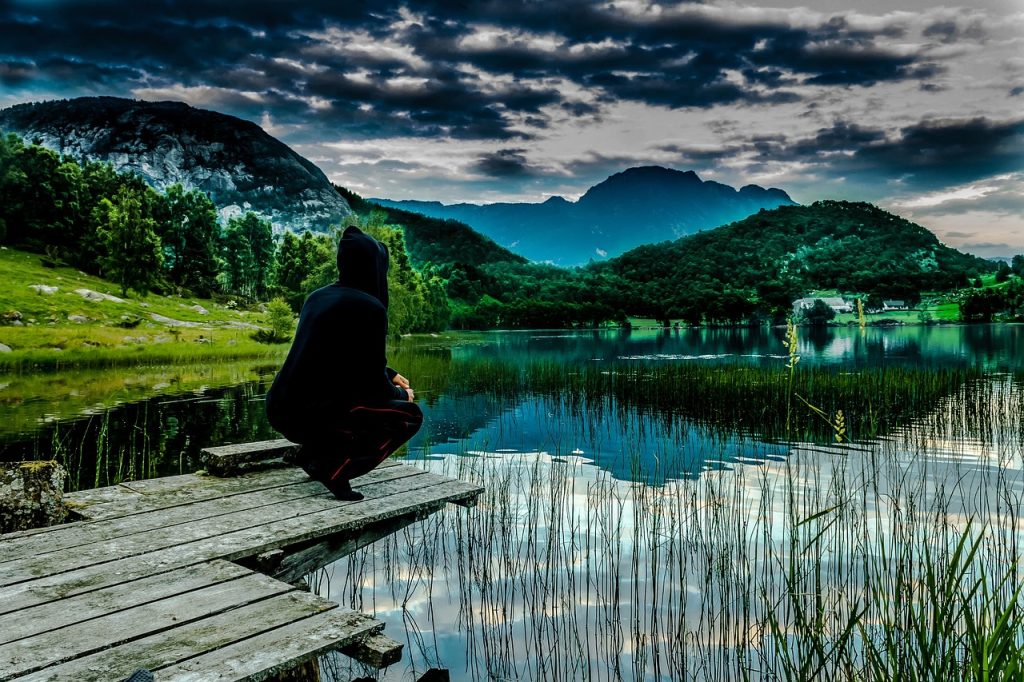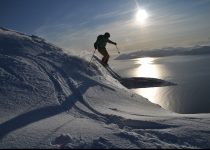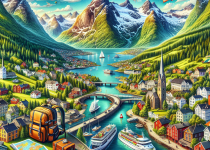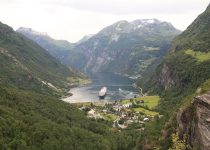Ultimate Guide to Backpacking in Norway: From Fjords to Northern Lights
Embarking on a backpacking journey through Norway promises an adventure like no other. With awe-inspiring landscapes including mountains, fjords, and the enchanting Northern Lights, Norway provides a stunning backdrop for any backpacker’s dream expedition. This comprehensive guide offers an in-depth insight into backpacking in Norway, encompassing everything from the best routes and budget planning to visa requirements and safety considerations.

Best Places to Backpack in Norway
- The Lofoten Islands: This archipelago in the Northern part of the country is renowned for its dramatic landscapes, captivating fishing villages, and pristine sandy beaches. Offering a plethora of hiking trails and awe-inspiring viewpoints, the Lofoten Islands provide an unrivalled outdoor experience.
- The Fjords: Norway is famous for its fjords, steep valleys carved by glacial activity over thousands of years. The renowned Geirangerfjord, Sognefjord, and Lysefjord offer captivating sights like waterfalls, rugged cliffs and abundant wildlife. Highlights include the famous Preikestolen (Pulpit Rock) in Lysefjord and the panoramic views from the Trollstigen Mountain Road in Geirangerfjord.
- Jotunheimen National Park: As the “Home of the Giants”, Jotunheimen houses Norway’s highest mountains. The park offers a variety of hiking routes, from easier treks suitable for less experienced hikers to challenging expeditions aimed at seasoned mountaineers.
- Hardangervidda National Park: Home to Europe’s largest mountain plateau, Hardangervidda National Park offers seemingly endless hiking opportunities and remarkable biodiversity.
Budgeting and Costs for Backpacking in Norway
Although Norway is regarded as one of the more expensive European destinations, backpacking on a budget is certainly achievable with careful planning. On average, you should anticipate spending around £50-£100 ($65-$130) per day. This estimate covers accommodation, food, transportation, and some entry fees for attractions. However, many of Norway’s most beautiful sights, like its breathtaking hiking trails and fjord views, can be enjoyed completely free of charge!
Accommodation for Backpackers in Norway
Norway offers a variety of accommodation options suitable for backpackers, ranging from vibrant hostels to camping sites nestled in the heart of nature.
- Hostels: Major cities like Oslo, Bergen, and Trondheim offer numerous hostels that cater to travellers on a budget. Hostels are an excellent way to meet fellow backpackers, and you can find the best deals on platforms like Hostelworld.
- Camping: Thanks to Norway’s “allemannsretten”, or the right to roam, wild camping in uncultivated land is permitted. This offers backpackers an unparalleled opportunity to immerse themselves in Norway’s stunning natural landscapes. Do ensure you adhere to the leave no trace principles to keep Norway’s outdoor spaces pristine.
Norway Backpacking Itinerary and Hiking Trails
Your itinerary would ideally depend on your interests and the duration of your stay. For a two-week backpacking trip, consider exploring Oslo, the country’s vibrant capital, before heading to Bergen, the gateway to the fjords. From there, visit stunning fjords like Sognefjord and Geirangerfjord, before heading north to the enchanting Lofoten Islands. Norway is also home to an extensive network of hiking trails catering to all skill levels, from leisurely walks around the UNESCO-listed Bryggen Wharf in Bergen to the challenging trek up to Trolltunga.
Backpacking Norway in Winter
While winter backpacking in Norway is not for the faint-hearted, the rewards are plentiful. Winter offers a unique opportunity to witness the spectacular Northern Lights and explore pristine, snow-covered landscapes. Keep in mind that the cold Norwegian winter requires adequate thermal clothing, and some hiking routes may be closed due to heavy snowfall.
Safety Tips for Backpacking in Norway
Norway is generally a very safe country for travel. However, it’s always wise to take precautions. Always stay updated with the latest weather forecasts, especially when planning hikes. Make it a point to inform someone about your travel plans, and always have a backup navigation system such as a physical map and compass.
Read more: Norway Safety Tips: Staying Safe in the Land of the Midnight Sun
Public Transportation in Norway for Backpackers
Norway boasts an efficient public transportation network that includes trains, buses, and ferries, making it relatively easy for backpackers to navigate the country. The Norway in a Nutshell tours are a popular choice, offering an easy way to experience some of Norway’s most scenic landscapes.
Backpacking Norway Alone
Norway is a fantastic destination for solo backpackers, thanks to its high safety standards and friendly locals. Solo backpacking offers the freedom to explore at your own pace and creates ample opportunities to meet fellow travellers.
What to Pack for Backpacking in Norway
Alongside standard backpacking gear, pack a high-quality raincoat, sturdy hiking boots, and seasonal clothing, including warm layers for winter or a swimsuit for summer fjord swims.
Backpacking Norway vs Sweden
While both Norway and Sweden offer stunning natural beauty, Norway stands out for its fjords and mountains. In contrast, Sweden, with its vast forests and archipelagos, offers a different charm. Both countries are worth exploring, despite the higher cost of living in Norway.
Food for Backpackers in Norway
Dining out in Norway can be costly, but supermarkets provide an excellent range of products for those who prefer self-catering. Sampling local delicacies like brunost (brown cheese) and freshly caught seafood is a must for a complete Norwegian experience.
Best Time to Backpack in Norway
The ideal time to backpack in Norway is from June to August when the weather is warmest, and the days are long. However, if witnessing the Northern Lights is on your bucket list, visit between September and March.
Read more: An In-Depth Guide to Norway’s Weather: Understanding Climate, Seasons, and Best Travel Times
Visa Requirements for Backpacking in Norway
As a member of the Schengen Area, Norway allows EU/EEA nationals to enter visa-free. Non-EU/EEA nationals should check the official UDI website for visa requirements.
Norway is a backpacker’s paradise, offering breathtaking landscapes and endless adventures. Regardless of your itinerary, the memories you’ll create in Norway will undoubtedly last a lifetime. Here’s to safe and unforgettable travels!
Read more: Norway Visa Requirements – A Comprehensive Guide
Essential Gear for Backpacking in Norway
Norway’s diverse landscapes and variable weather conditions demand careful planning when it comes to what you pack for your trip. Here’s a basic list:
- Hiking Boots: Given the terrain, a pair of waterproof, comfortable, and well-broken-in hiking boots is a must.
- Rain Gear: Norway’s weather can be unpredictable. Always carry a waterproof and windproof jacket, irrespective of the season.
- Layers: Temperatures can fluctuate throughout the day. Pack layers, including base layers, mid-layers, and an insulating jacket, especially if you’re backpacking in the colder months.
- Camping Equipment: If you plan to camp, you’ll need a tent, sleeping bag suitable for Norway’s climate, and a portable stove for cooking.
- Navigation Tools: Carry a good map and compass. Even though you may rely on your smartphone, having a backup is important, especially in remote areas.
Connectivity and Communication in Norway
Staying connected in Norway is generally easy, as most areas, even some remote ones, have good mobile coverage. Prepaid SIM cards are widely available. Wi-Fi is commonly available in hostels, cafés, and public spaces. For emergencies, the general emergency number in Norway is 112.
Environmental Considerations and Responsible Travel
Norway’s stunning natural landscapes are a treasure that should be preserved. Following the principles of ‘Leave No Trace’ is vital when backpacking. Camp at least 150 metres away from houses and avoid making fires in the forested areas during the warmer months as wildfires can easily start. Take your trash with you and respect the wildlife.
Health and Insurance
Norway has excellent healthcare, but it can be expensive for non-residents. Therefore, it’s essential to have good travel insurance that covers emergency medical costs, including evacuation. If you plan on doing more extreme activities like glacier hiking or rock climbing, make sure your insurance covers these.
Backpacking Norway: A Lifetime Experience
Despite being one of the most expensive countries in the world, the experiences that Norway offers make every penny spent worth it. Backpacking in Norway is not just about reaching a destination; it’s about the immersive journey through majestic landscapes, fjords, vibrant cities, and witnessing the magical northern lights. Whether you’re a seasoned backpacker or this is your first trip, backpacking in Norway is sure to be a memorable adventure.
As with any travel adventure, planning and preparation are key. This guide should serve as a good starting point, but make sure you do further research to build an itinerary that best suits your interests and abilities. Most importantly, remember to take in each moment, respect the environment and the local communities, and enjoy the journey.
Safe travels on your backpacking adventure through Norway!
- Norwegian Myths in Modern Media: From Literature to Video Games - August 20, 2024
- Urban Farming in Norway: Green Spaces in the Heart of the City - August 14, 2024
- Norwegian Legends: The Enigmatic Sea Serpent of Seljord - August 13, 2024


